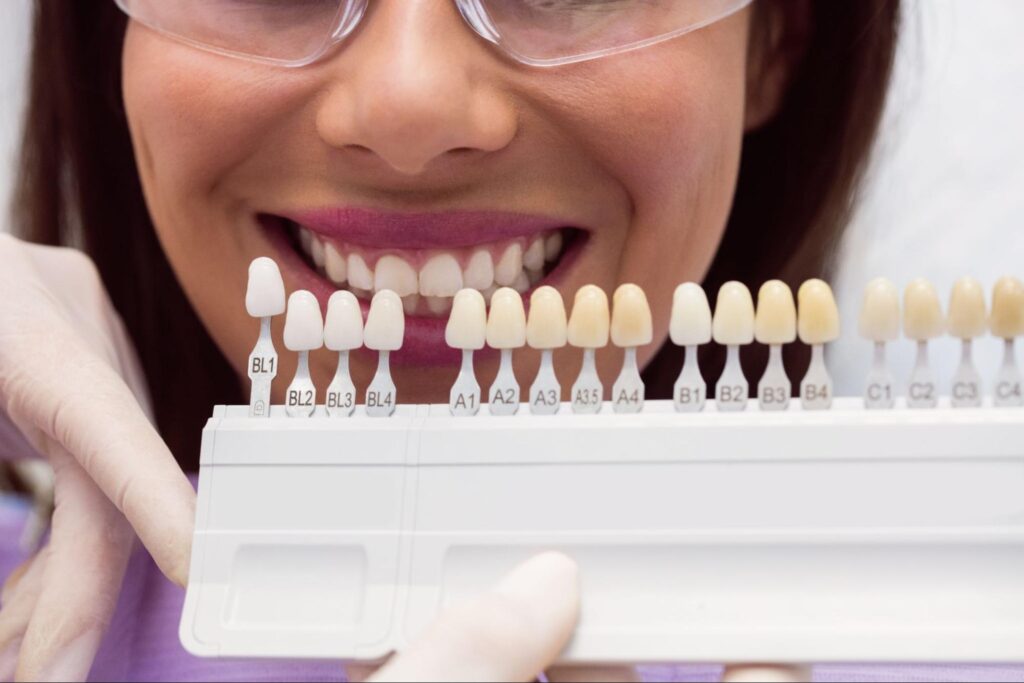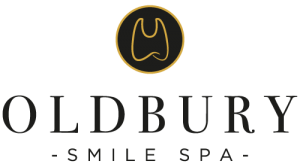What Does A Dental Crown Look Like?
Facing a problem with weak, broken, or decayed teeth can lead many to wonder about solutions that restore not just the function but also the aesthetics of their smile. Dental crowns present a popular option for those looking to repair and enhance the appearance of their damaged teeth.
This blog delves into what dental crowns look like by exploring various types including gold crowns, porcelain crowns, zirconia ceramic and more. We’ll also touch on the materials used in crafting these tooth caps and discuss how they contribute towards restoring tooth strength, shape and colour.
Key Takeaways
- Dental crowns can be gold, porcelain, zirconia, or made from composite resin, each with unique properties and appearances.
- They mimic the shape and colour of natural teeth, fitting over damaged ones to restore strength and improve smiles.
- Crowns are custom-made to match your existing teeth for a seamless look, using materials like E-MAX lithium disilicate for durability.
- The choice of crown depends on tooth location, function needs, and aesthetic desires.
- With proper care, dental crowns can last between 5 to 15 years or more.
Types of Dental Crowns
Explore the various types of dental crowns, each offering unique benefits and appearances. Discover tooth-shaped caps like gold, all-porcelain, porcelain-fused-to-metal (PFM), zirconia, and E-MAX: lithium disilicate crowns.
Gold crowns
Gold crowns stand out because of their durability and strength. They last longer than most other types, making them a good choice for back teeth where chewing force is greatest. Dentists often recommend gold crowns for restoring weak teeth or after endodontic therapy.

All Porcelain Crowns
Transitioning from gold crowns to all-porcelain crowns, the latter are a popular choice due to their natural appearance. They offer excellent aesthetics and are suitable for those allergic to metal.
Porcelain crowns can be matched to the shade of your existing teeth, providing a seamless blend. Their durability is commendable, with proper care they can last between 5-15 years, making them a reliable option for dental restorations.
Porcelain-fused-to-metal crowns (PFM)
Porcelain-fused-to-metal crowns (PFM) are a popular choice due to their durability and natural appearance. These crowns consist of a metal structure covered by layers of porcelain, providing strength and an aesthetic match to the surrounding teeth.
Zirconia crowns
Zirconia crowns are made from a strong ceramic material known as zirconium oxide. They are popular for their durability, strength, and natural appearance, making them suitable for both front and back teeth.
E-MAX: Lithium Disilicate Crowns
E-MAX crowns are made from a type of ceramic called lithium disilicate, known for its strength and natural appearance. These crowns are highly translucent, allowing light to pass through and giving them a lifelike look.
E-MAX crowns are often chosen for their durability, making them suitable for both front and back teeth. They require less tooth reduction compared to traditional crowns, preserving more of the natural tooth structure.
With proper care, E-MAX crowns can last between 10-15 years.

Dental Crown Materials
Dental crowns are made from various materials such as zirconia ceramic, porcelain, composite resin, and metal alloy. CEREC crowns are also a popular choice for their advanced technology in creating dental restorations.
Zirconia ceramic
Zirconia ceramic, a popular choice for dental crowns, offers exceptional strength and durability. It’s known for its natural appearance and compatibility with the body. Zirconia also provides excellent biocompatibility and resistance to wear, making it an ideal option for long-term use in dental restorations.
In recent years, zirconia ceramic has gained popularity due to its ability to blend seamlessly with natural teeth. Its remarkable strength allows for the creation of thinner yet sturdy crown structures, preserving more of the original tooth structure while providing lasting functionality.
This material is especially well-suited for individuals who require a reliable and aesthetically pleasing solution that can withstand the demands of daily use.
Porcelain
Porcelain crowns exhibit excellent translucency, enabling them to blend seamlessly with surrounding teeth. This type of dental crown is particularly sought after for its ability to mimic the appearance of natural enamel, providing patients with a confident smile while effectively restoring function.
Composite resin
Transitioning from porcelain to composite resin, it’s important to note that composite resin crowns are made from a mixture of plastic and fine glass particles. These crowns are known for their natural appearance as they can be carefully matched to the colour of the surrounding teeth, giving them an aesthetically pleasing look.
Metal alloy
Metal alloy dental crowns are made from a blend of different metals, such as chromium, cobalt, and nickel. These materials are known for their strength and durability, making them suitable for withstanding the force of chewing and biting.
CEREC crowns
Transitioning from metal alloy to CEREC crowns, it’s worth mentioning that CEREC stands for Chairside Economical Restoration of Esthetic Ceramics. This innovative technology allows for the production of ceramic dental restorations in a single visit to the dentist, utilising 3D imaging and CAD/CAM technology.
Conclusion
Dental crowns come in various materials, including gold, porcelain, and zirconia. These tooth-shaped caps restore weak teeth and enhance appearance. They are used for dental implants, bridges, and fillings to match natural tooth colour and size.
The cost varies depending on the material used. Before-and-after photos show their impact on oral hygiene and chewing surface restoration.











